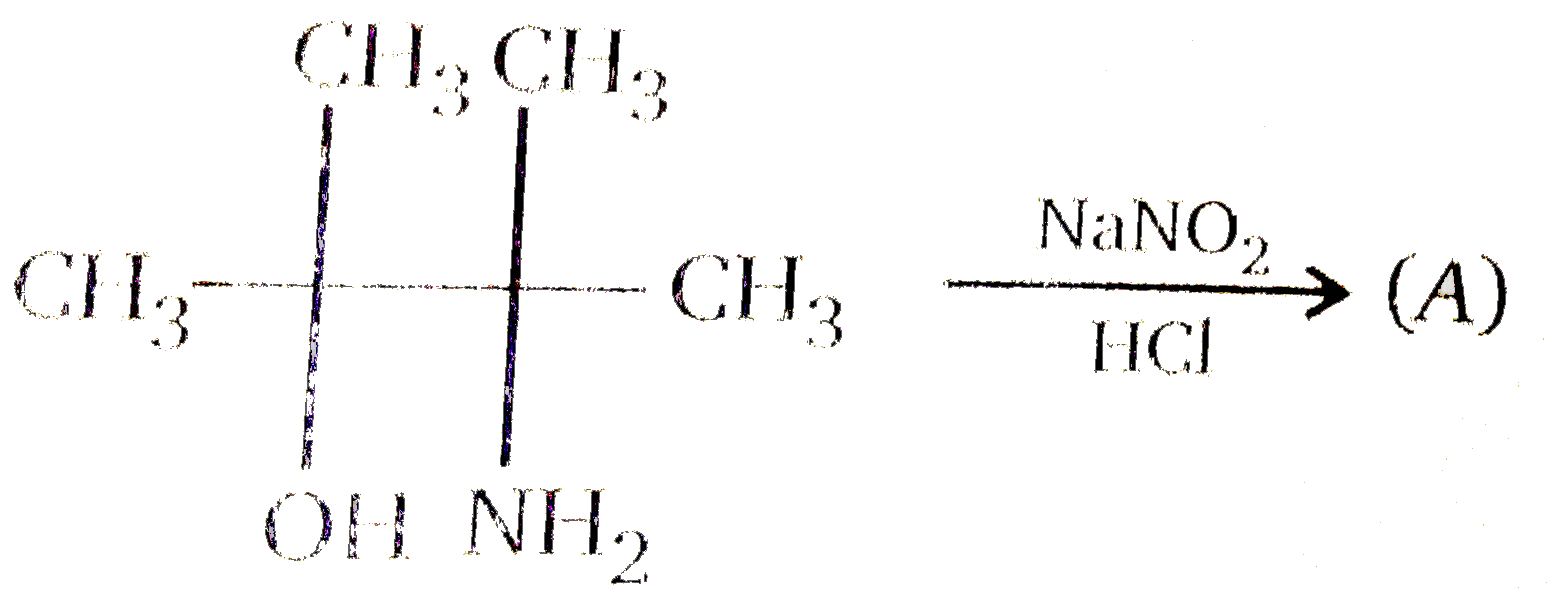Name the simplest ketone.
Step by step video & image solution for Name the simplest ketone. by Chemistry experts to help you in doubts & scoring excellent marks in Class 10 exams.
Updated on:21/07/2023Topper's Solved these Questions
- CARBON AND ITS COMPOUNDSBook:LAKHMIR SINGH & MANJIT KAURChapter:CARBON AND ITS COMPOUNDSExercise:Exercise
Explore 233 Videos
- ACID, BASES AND SALTSBook:LAKHMIR SINGH & MANJIT KAURChapter:ACID, BASES AND SALTSExercise:Questions Based on High Ordre Thinking skills (HOTS)
Explore 1 Video
- CHEMICAL REACTIONS AND EQUATIONS Book:LAKHMIR SINGH & MANJIT KAURChapter:CHEMICAL REACTIONS AND EQUATIONS Exercise:QUESTIONS BASED ON HIGH ORDER THINKING SKILLS (HOTS)
Explore 1 Video
Similar Questions
Knowledge Check
Di-tert-glycols rearrange in the presence of acid to give α-trtiary ketones. The trivial name of the simplest glycol of this type is pinacol, and this type of reaction therefore is named pinacol rearrangement (in this specific case, the reaction is called a pinacol-pinacolone rearrangement). The rearrangement involves 4 steps. one of the hydroxyl group is protonated in the first step. A molecule of water is eliminated in the second step and a tertiary carbocation is formed. the carbocation rearranges in the third step into a more stable carboxonium ion via a [1, 2] rearrangement. In the last step, the carboxonium ion is deprotonated and the product ketone is obtained.

What is R.D.S. of pinacol-pinacolone rearrangement ?AI stepBII stepCIII stepDIV stepDi-tert-glycols rearrange in the presence of acid to give α-trtiary ketones. The trivial name of the simplest glycol of this type is pinacol, and this type of reaction therefore is named pinacol rearrangement (in this specific case, the reaction is called a pinacol-pinacolone rearrangement). The rearrangement involves 4 steps. one of the hydroxyl group is protonated in the first step. A molecule of water is eliminated in the second step and a tertiary carbocation is formed. the carbocation rearranges in the third step into a more stable carboxonium ion via a [1, 2] rearrangement. In the last step, the carboxonium ion is deprotonated and the product ketone is obtained.


How many products obtained in above reaction ?A1B2C3D4Di-tert-glycols rearrange in the presence of acid to give α-trtiary ketones. The trivial name of the simplest glycol of this type is pinacol, and this type of reaction therefore is named pinacol rearrangement (in this specific case, the reaction is called a pinacol-pinacolone rearrangement). The rearrangement involves 4 steps. one of the hydroxyl group is protonated in the first step. A molecule of water is eliminated in the second step and a tertiary carbocation is formed. the carbocation rearranges in the third step into a more stable carboxonium ion via a [1, 2] rearrangement. In the last step, the carboxonium ion is deprotonated and the product ketone is obtained.


Product 'P' is :A B
B C
C D
D
Write the name and chemical formula of the simplest organic cid .
View SolutionGive it he common name and IUPAC name of the simplest aldehyde.
View SolutionDivide or write the simplest form
View SolutionGive the name and structural formula of the simplest amino acid.
View SolutionDi-tert-glycols rearrange in the presence of acid to give α-trtiary ketones. The trivial name of the simplest glycol of this type is pinacol, and this type of reaction therefore is named pinacol rearrangement (in this specific case, the reaction is called a pinacol-pinacolone rearrangement). The rearrangement involves 4 steps. one of the hydroxyl group is protonated in the first step. A molecule of water is eliminated in the second step and a tertiary carbocation is formed. the carbocation rearranges in the third step into a more stable carboxonium ion via a [1, 2] rearrangement. In the last step, the carboxonium ion is deprotonated and the product ketone is obtained.


Product (A) is :
View Solution